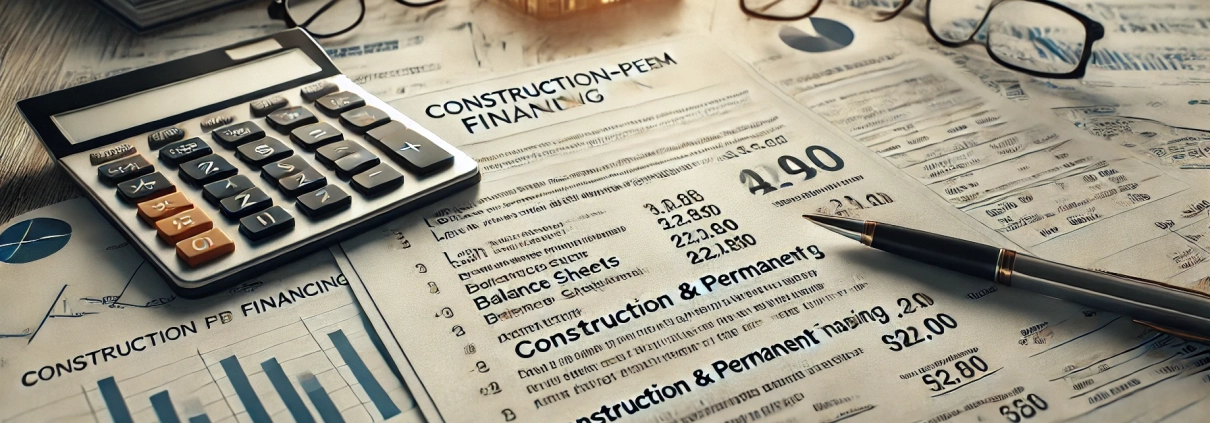Construction-Perm Loan
Also referred to as a “Rollover Loan,” a construction-perm loan is a loan that starts off as a construction loan and immediately converts into permanent debt financing once construction of the project is finalized and the property is stabilized.
Putting ‘Construction-Perm Loan’ in Context
Project Overview
Lakefront Development Group, a real estate developer based in Milwaukee, WI, is developing a 150,000-square-foot suburban office building named Northside Corporate Center. The building is a build-to-suit project for a national engineering firm that has signed a 15-year lease as the anchor tenant. Located in a growing business park on Milwaukee’s north side, the development is part of the city’s ongoing efforts to revitalize its suburban office market.
Financing with a Construction-Perm Loan
To finance the project, Lakefront Development Group secured a construction-perm loan. This type of loan begins as a construction loan, providing the necessary funds for the construction phase, and then automatically converts into permanent debt financing once the project is completed and the property is stabilized.
Construction Phase:
During the construction phase, the loan operates as a traditional construction loan, with funds disbursed to cover construction costs, land acquisition, and other related expenses. The total construction budget for Northside Corporate Center is estimated at $30 million, with $24 million financed through the construction-perm loan and $6 million in equity provided by Lakefront Development Group.
The construction loan carries an interest rate of SOFR + 300 basis points, and interest-only payments are required during the construction period. Construction is expected to take 18 months, during which Lakefront Development Group will focus on keeping the project on schedule and within budget to ensure a smooth transition to the permanent phase.
Conversion to Permanent Loan:
Upon completion of construction and stabilization of the property—which means achieving a specified occupancy rate, in this case, 90%—the loan automatically converts into permanent debt financing. This permanent loan phase has a fixed interest rate of 6.25% and a 25-year amortization period.
The benefits of using a construction-perm loan for this project include the elimination of refinancing risk, as the permanent financing is already in place once construction is complete. This structure also simplifies the overall financing process by combining two phases of financing into one loan product, reducing transaction costs and ensuring continuity of financing.
Key Financial Details
- Construction Loan Amount: $24 million
- Equity Contribution: $6 million
- Interest Rate during Construction: SOFR + 300 bps
- Construction Period: 18 months
- Permanent Loan Interest Rate: 6.25%
- Amortization Period: 25 years
- Total Project Cost: $30 million
Conclusion
In this hypothetical case, the construction-perm loan is a strategic financial tool for Lakefront Development Group, offering a seamless transition from construction to permanent financing. This reduces the risk of financing disruptions and provides the developer with long-term stability and predictability in loan payments as the project moves from the construction phase into a stabilized, income-generating asset.
Frequently Asked Questions about Construction Financing in Real Estate Development
What is construction financing?
Construction financing is “a short-term loan, typically with a floating interest rate, issued by a lender to finance the construction of a real estate project.” The loan is disbursed in phases or “draws” as construction progresses.
How was construction financing used in The Lofts at Bridger project?
Mountain Vista Development secured a $15 million construction loan with an 18-month term to redevelop a warehouse into 85 apartments. The financing covered 70% of the total project cost, with draws disbursed based on construction milestones.
What are “draws” and how do they work?
Draws are incremental disbursements of the loan “based on construction milestones.” For example, after completing the foundation and partial framing, the developer may receive a specific amount to continue construction. This minimizes lender risk.
What financial terms were associated with the construction loan?
The loan had a floating interest rate of “LIBOR + 3.5%,” an 18-month term, and a loan-to-cost ratio of 70%. Interest accrues only on the outstanding balance, increasing as more funds are drawn.
How does the developer repay the construction loan?
Once construction is complete and the property is stabilized (fully leased), the loan is repaid using proceeds from permanent financing or from the sale of the property. In this case, Mountain Vista plans to refinance with a $17 million permanent loan.
What is the role of equity in construction financing?
The developer must contribute equity to cover the portion not financed by the loan. For The Lofts at Bridger, Mountain Vista contributed $6.4 million of equity to cover the gap between the $21.4 million project cost and the $15 million loan.
What happens after construction is completed?
After construction, the goal is to stabilize the property (lease it up), then refinance the construction loan into a permanent loan. Mountain Vista projects a six-month stabilization period before transitioning to long-term financing.
Why is construction financing important in redevelopment projects?
It provides the capital needed to execute value-add strategies, such as adaptive reuse. In this case, the construction loan enabled Mountain Vista to convert an aging warehouse into a vibrant apartment community.
Click here to get this CRE Glossary in an eBook (PDF) format.

